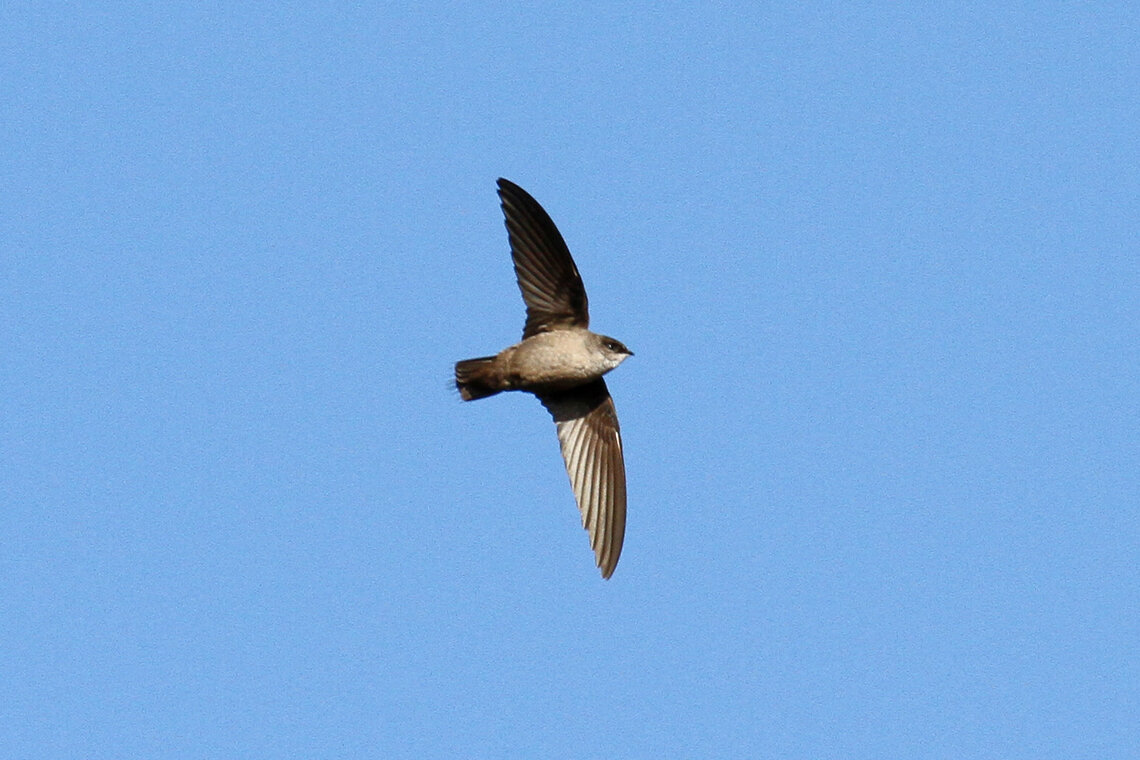By Larry Schwitters, Project Coordinator, Vaux’s Happening
The Audubon Vaux’s Happening Project has counted, not estimated, just under 18 million Vaux’s Swifts going to roost during the last 14 migrations. In that time, we’ve learned a great deal about the needs of these special birds but have also unearthed many more questions. When there were lots of trees and few buildings, this species, and their close relatives the Chimney Swift, nested and spent their nights inside hollow trees large enough for them to fly inside. As civilization and construction descended on the American wilderness, the small birds discovered that hollow, vertical, man-made, masonry structures fit their needs. Now these birds, especially the eastern Chimney Swifts, are almost never found inside trees … why?
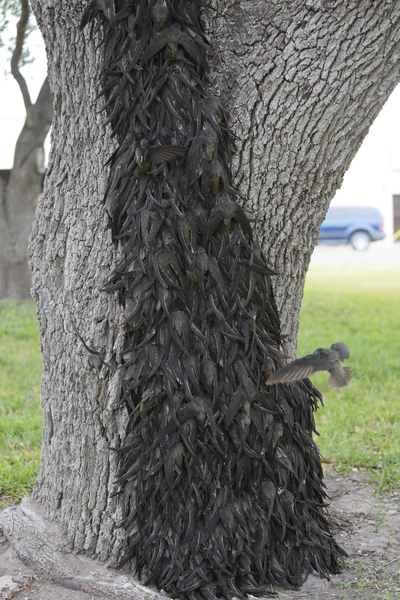
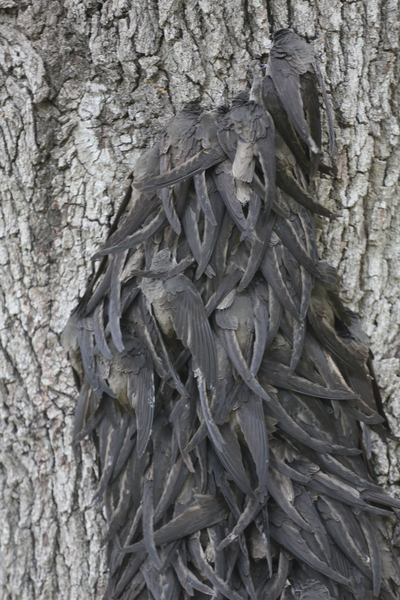 Another mystery to solve is why do these birds, come bedtime, seem so intent on massing together in as large a flock as they can? In each of the last ten years, we’ve documented over a million Vaux’s roosting events as the swifts migrated south. This can occur at 50-90 different sites, but 87 to 97% of the total comes from just a dozen or so enormous roosts. Again, why?
Another mystery to solve is why do these birds, come bedtime, seem so intent on massing together in as large a flock as they can? In each of the last ten years, we’ve documented over a million Vaux’s roosting events as the swifts migrated south. This can occur at 50-90 different sites, but 87 to 97% of the total comes from just a dozen or so enormous roosts. Again, why?
Swifts spend most of their time flying. Some species may never land after they reach their wintering range. This produces a lot of heat that they need to get rid of. We have yet to figure out how their feather structure, placement, or density, allows them to do that more efficiently than other birds. But they must be very good at it, and it follows that they will then be challenged to conserve body heat once they stop flying (they certainly don’t fluff up well).
There are 3 behaviors the swifts use to stay warm. First, they share body heat. Two swifts in a roost may snuggle together. If two snuggling together helps, a thousand in a pile works much better. This is most dramatic while piled together on the outside of a tree trunk when a chimney or hollow tree cannot be found as the sun goes down. With twenty times the population, this is more likely to be seen with Chimney than Vaux’s Swifts. However, there is at least one observation of this phenomenon occurring with Vaux’s Swifts near Bullhead City, AZ back in 1964.
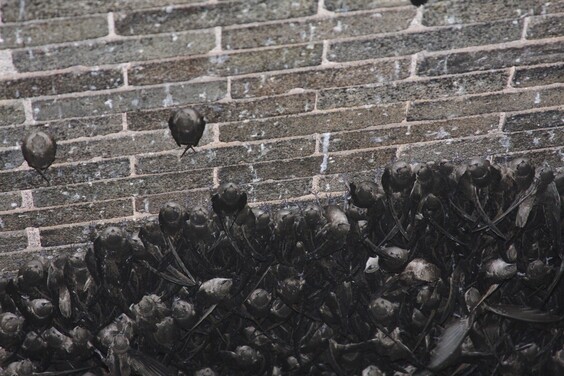
Inside a tree the swifts are insulated, out of the wind, and safe from predators, but if they can find some bricks that have been out in the sun, that’s better. Bricks, masonry, rocks, and sand soak up the heat of the day and after the sun goes down, slowly release it all night long, called latent heat. We deployed temperature loggers into eight different empty chimneys and two hollow trees to measure the differences. We were surprised to discover that a brick chimney could be up to 25°F warmer than outside in the middle of the night.
In the early 1940’s, fire codes began to require new construction chimneys to have a smooth liner which the swifts can’t get a grip on. This means that the prime roost sites are old and perhaps falling apart. The swifts are good at finding these, remembering where they are, and some may have been in continual use for 100 years or more. We know of one site in Guatemala that goes back to at least 1928. These prime communal migratory roosts are located about a day’s flight apart. However, little is known about roosting locations of migrant Vaux’s Swifts. We have yet to find one in Northern California, but have discovered large, hollow, Redwood Trees being used. Roosts have been located in San Diego, but from the border to Mexico City, we have not been able to find any large, migratory roosting sites.
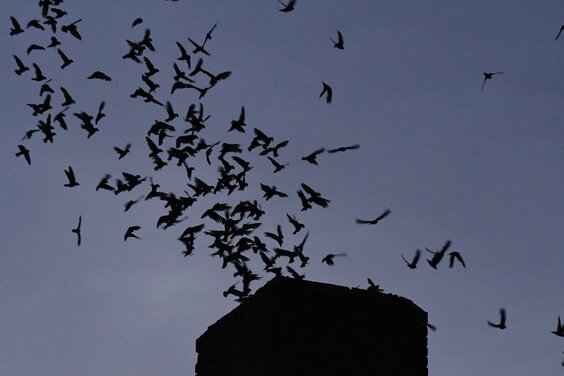
The Vaux’s Swift migratory pathway covers a large portion of the Sonoran Joint Venture region. They extend as far east as the very southwest tip of New Mexico, west across the Baja Peninsula, through Sonoran and other western Mexican states, and on down to southern Mexico and Central America. Despite this large migratory corridor, Vaux’s have been reported very few times and in low numbers, including in eBird sightings.
The Sonoran eBird champ, Adriana H. Alvarez from Ensenada has reported observing flocks of 20, 37, 62, and 120 swifts all flying north in the last four springs. But by far the most useful sighting is a personal communication from retired Arizona Game and Fish non-game specialist, Linden Piest.
On the afternoon of April 27, 2008, “I witnessed a migration of Vaux’s swifts at the El Doctor wetlands north of El Golfo de Santa Clara, Sonora (about 60 miles south of San Luis, AZ). There was a continual stream of swifts, probably 100 or so a minute flying north for as long as we were there (about 1 hour). These wetlands are at the base of a bluff that basically forms a northern extension of the east coast of the Gulf of California. The swifts did not appear to be foraging around the wetlands or catching updrafts along the bluffs but were perhaps just using the bluffs as a navigation aid after flying up the coast.”
Where did these thousands of wee birds spend their last night before crossing the Gulf of California and where did they hope to be by sunset? The 500km from Mexicali to Isla Tiburón has got to have at least one roost site. Maybe the swifts are just using tree trunks. Perhaps they are in the small towns along the coast. I will leave you with one spectacular and singular roost possibility. The sheer rocky bluffs south of Puerto Lobos, which should get a large enough dose of sunshine in the afternoon to keep a flock of small bird’s toasty warm all night. White-throated Swifts roost in the vertical rock crevasses; could Vaux’s be snuggled in with them?
I hope that the many birders and conservation partners of the Sonoran Joint Venture will help us find out. Please document any sighting of Vaux’s Swifts, and share your thoughts about possible roosting locations with us.

